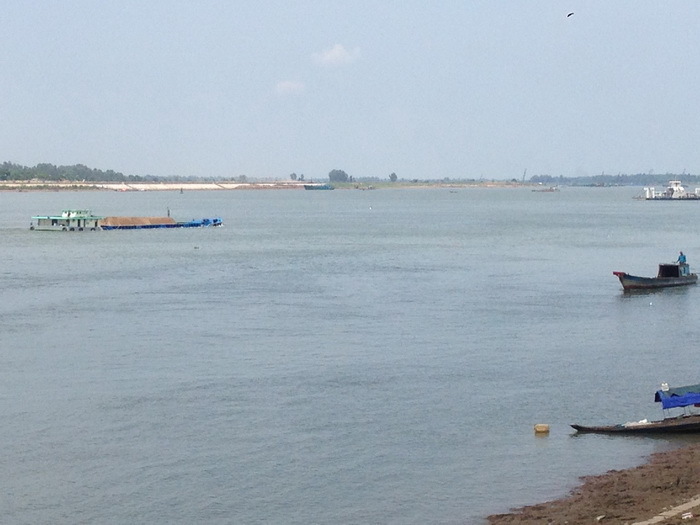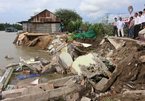In general, early September is the high rainy season. The flooded area in Tonle Sap area in Cambodia should expand by four times, from 4,700 to 16,000 square kilometers and from there, the floodwater would follow Tien and Hau Rivers, the two tributaries of the Mekong River, to reach the Mekong Delta region.

However, Ky Quang Vinh, an independent researcher on ecological environment of Mekong River basin, who is present in Tonle Sap, has noted unusually low water level there.
“I came to Tonle Sap on September 4. At this moment, the water from Mekong is pouring into Tonle Sap and is red with alluvium color. I asked the locals and found that the water has been here for a few days, but the water level is 2-3m lower than usual,” Vinh said.
“Tonle Sap regulates water for the Mekong Delta, especially when there are extreme phenomena such as floods and droughts. However, it seems that Tonle Sap is drying up, so the ability to do this is declining, ” he said.
| As Mekong’s floodwater flows to Tonle Sap later and the water volume is smaller than usual, the riverhead water level of Cuu Long has been ata record low. |
As Mekong’s floodwater flows to Tonle Sap later and the water volume is smaller than usual, the riverhead water level of Cuu Long has been ata record low.
In early September, the water level in Tien and Hau Rivers was0.18-1.31 meters lower than the same period last year at Tan Chau and Chau Doc Stations. The floods came on September 13, while the water level at the riverhead stations was just 0.07-0.13 meters higher than the alarm level No 1.
Meteorological and Hydrology Station of An Giang province reported that floodwaters have come, but the highest water level in the riverhead areas of Tien and Hau still cannot reach alarm level No 1.
This year's flood peak may appear in time between early and mid-October, but it is expected to reach the alarm level No 1 only (3.5 meters in Tan Chau and 3 meters in Chau Doc), lower than the flood peak in 2018 and the average level of many years.
Asked about the decline in the water flow to the Mekong Delta, Nguyen Huu Thien, an independent researcher on Mekong River environment, said if China’s hydropower dams close, this would impact the lower course, but in fact, China and Myanmar contribute only 18 percent of total water volume of Mekong.
Of the total annual water volume of 470 billion cubic meters of the Mekong, 82 percent is contributed by lower basin countries. And the 82 percent is rainwater, so it depends on the weather.
Kim Chi

Anti-landslide projects in Mekong Delta called costly and ineffective
The Mekong Delta has spent over VND16 trillion, some US$690 million, on anti-landslide projects over the past 10 years, though there remain still more than 560 areas prone to landslides in the region, stretching 834 kilometers.

Mekong Delta's bounty of riches waiting to be explored
Often referred to as the rice bowl of Vietnam for its emerald-green rice paddies, the Mekong Delta is an alluring region rich in unspoiled countryside and peaceful rural settlements that attract nature and culture lovers.
 It is now the flood season in the Mekong Delta, but people there have already begun to worry about saline intrusion in the upcoming dry season.
It is now the flood season in the Mekong Delta, but people there have already begun to worry about saline intrusion in the upcoming dry season.